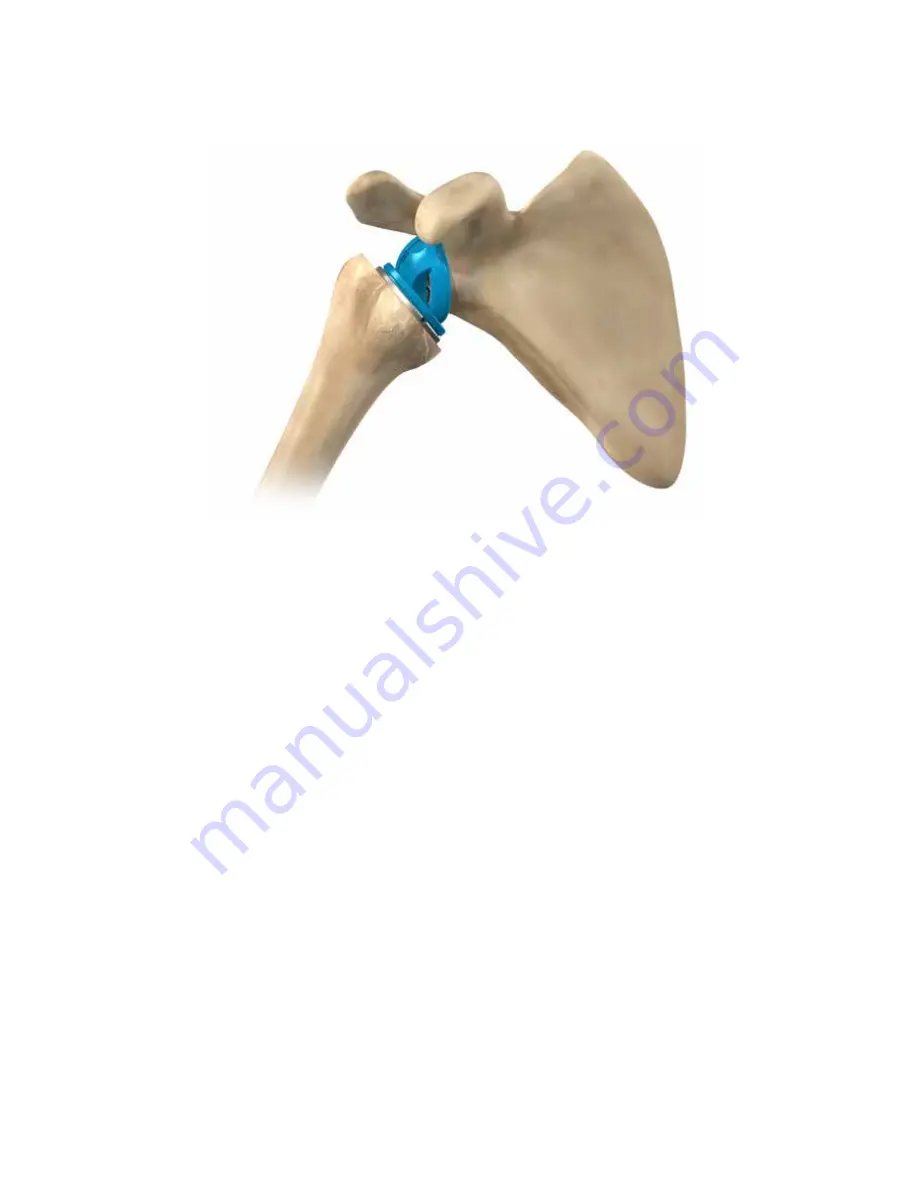
41
40
Joint tensioning and stability assessment should be
performed with particular care, using the following
guidelines:
• Tension within the conjoined tendon should be
noticeably increased and detectable by
palpation.
• With the arm in a neutral position, apply
a longitudinal traction force to the arm while
observing the movement of the shoulder with
respect to the entire shoulder girdle as well as
the trial prosthetic joint. Tension is appropriate
if, in response to the longitudinal traction, the
entire shoulder moves before detectable
separation of the trial prosthetic surfaces. The
articular surfaces should still move smoothly
relative to each other and the joint reduction
should be achieved without excessive force.
• External rotation may appropriately demonstrate
slight gaping between the glenosphere and
articular surface (2 to 3 mm maximum).
• Positioning a hand or fist near the axilla to
serve as a fulcrum, further adduct the arm
and look for undesirable tendencies to sublux
or dislocate laterally (a small opening of 2 to 3
mm is acceptable). Estimate the maximum
forward elevation.
• Assess stability at 90° abduction with the
humerus in neutral, maximum internal and
maximum external rotation. Estimate also the
maximum forward elevation.
18
JOINT TENSIONING AND STABILITy ASSESSMENT
if instability can be demonstrated, it is critical to attempt
to identify the cause and rectify. make sure that the trial
implants have been positioned correctly with respect
to the bone and to each other. overcome any conflicts
between the proximal humeral component and soft
tissues or bony structures that surround the glenosphere
(e.g. a non-united greater tuberosity) by excision of the
conflicting elements. Inadequate tensioning may be
overcome using:
• a thicker cup (+6 mm or +9 mm)
• a standard cup instead of a high mobility cup
• a 42 mm glenosphere.
• In more extreme cases: a modular humeral
lengthener or a retentive cup.
if unable to relocate the humerus, the options include
changing to a thinner articular surface, additional
soft tissue releases and lowering the level of humeral
resection.
When the trials are satisfactory, the trial glenosphere
should be removed using the extraction T-handle so that
final implant fixation can be performed.
A 1.5 mm glenosphere guide pin is inserted through the
central hole of the metaglene.
Figure 73
















































